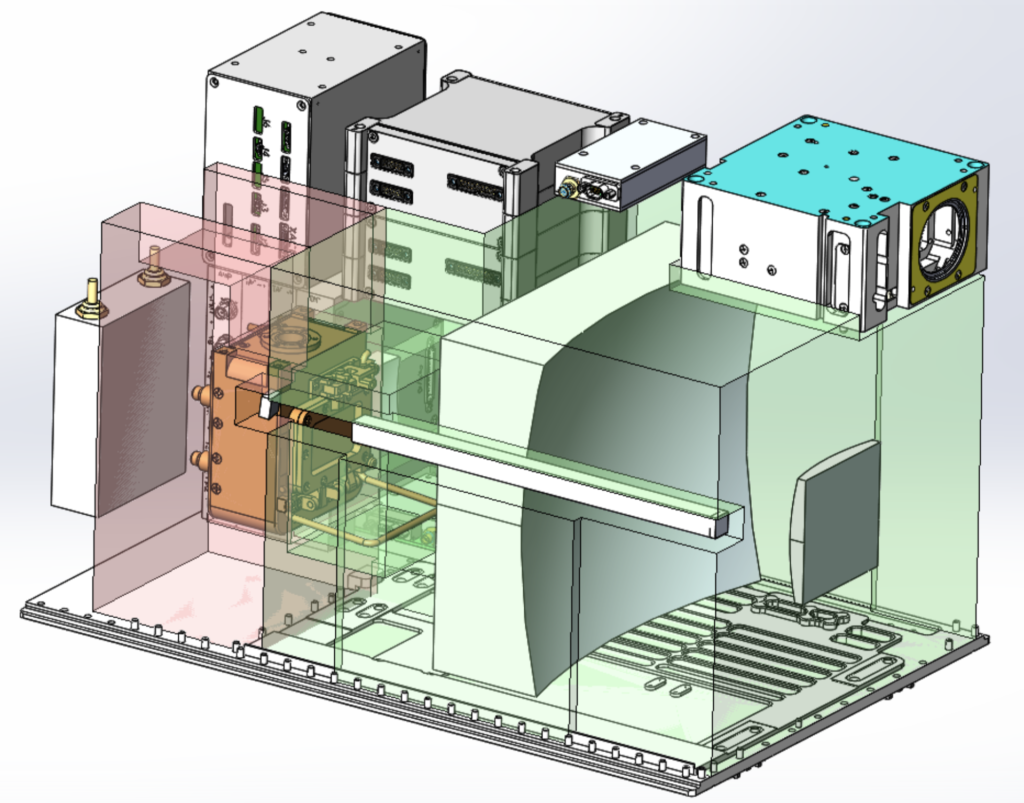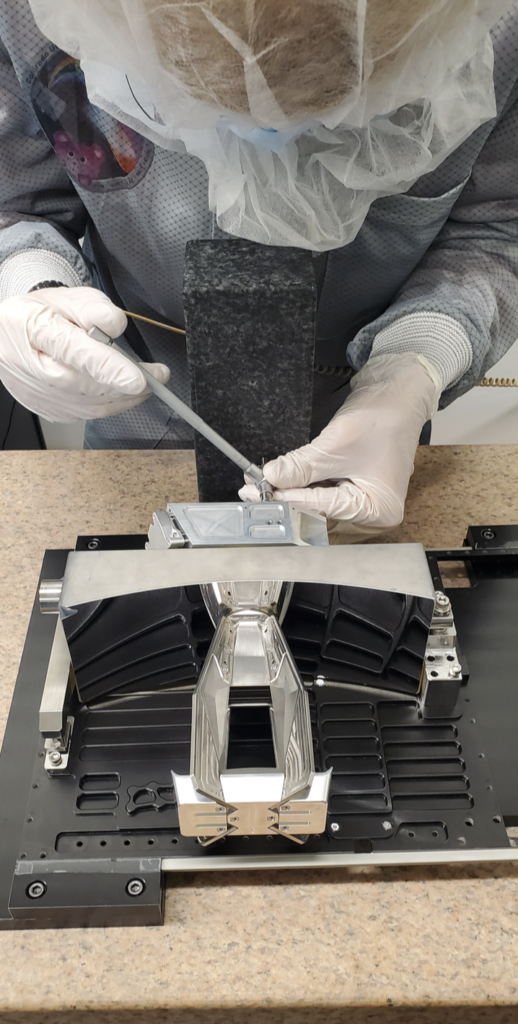Telescope
Maximizing sensitivity is mostly about limiting background, but it’s also about collecting as many photons as you can. Much like how your pupil opens up in a dark room to collect more light, a larger SPRITE telescope will pick up more photons from our distant, dim targets. Unfortunately, the star-tracker that guides how SPRITE points also needs to look out the same side of the spacecraft as the telescope for best results. To get the largest collecting area possible, SPRITE borrows the telescope innovation pioneered by its sister mission, CUTE, by utilizing a rectangular telescope where the primary mirror is also the main structural support. At 18 x 16 cm, the SPRITE telescope collects roughly 40% more light than a circular telescope of the same height. It’s also compact in length, leaving ample room for the spectrograph.
This is less of a gain for SPRITE than it was for the smaller CUTE, as CUTE has a 22.6 x 10 cm forward surface area versus SPRITE’s 22.6 x 22.6 cm area, nevertheless it is an important boost to the instrument capability.
The rectangular telescope does present a few challenges, however, including the need to hold the optic positions to less than 20 microns accuracy through the harsh launch vibrations. Both the CUTE and SPRITE telescopes were designed and fabricated by Nu Tek Precision Optics in Aberdeen, Maryland.

